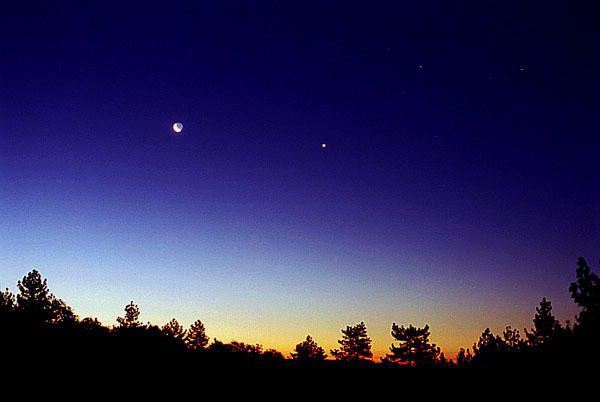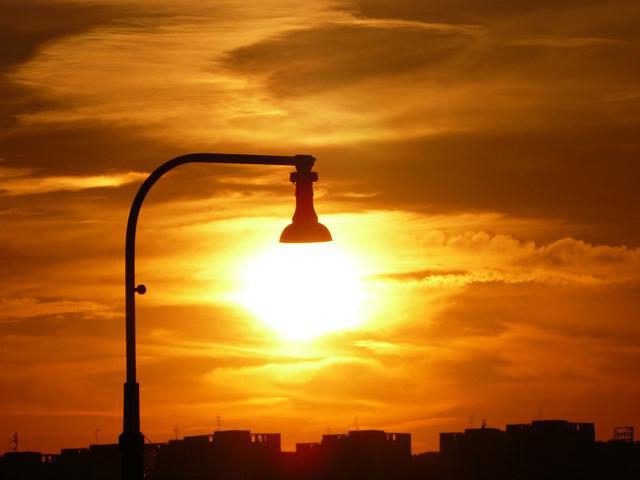As the length of daylight hours increases by latitude. Light day: duration by months
Benefit and necessity sunlight for human body is not in doubt. Any of us knows that without it existence is impossible. In winter, we all experience a more or less severe deficiency of it, which negatively affects our well-being and undermines the already unstable immunity.
What happens to daylight
With the onset of the cold season, the duration of which is rapidly decreasing, more and more giving way to rights. The nights are getting longer and longer, and the days, on the contrary, are getting shorter. After a period winter equinox the situation begins to change in reverse side which most of us look forward to. Many people want to accurately navigate the duration daylight hours currently and in the near future.
As you know, the number of light hours per day begins to increase after the end of the period of the so-called winter solstice. At its peak, daylight hours are recorded annually, the duration of which is the shortest. With scientific point From the point of view, the explanation is that the sun is at this time in the most distant point of the orbit of our planet. This is influenced by the elliptical (that is, elongated) shape of the orbit.
In the northern hemisphere, it happens in December and falls on the 21st-22nd. A slight shift in this date depends on the dynamics of the Moon and shifts in the At the same time, the southern hemisphere is experiencing a reverse period summer solstice.
Light day: duration, timing
A few days before and after the date of each solstice, the daylight does not change its position. Only two or three days after the completion of the most dark day the light gap begins to gradually increase. Moreover, at first this process is practically invisible, since the addition occurs only for a few minutes a day. In the future, it begins to brighten faster, this is explained by an increase in the speed of solar rotation.
In fact, the increase in the length of daylight hours in the northern hemisphere of the Earth begins no earlier than December 24-25, and it occurs until the very date of the summer solstice. This day alternately falls on one of three: from 20 to 22 June. The increase in daylight hours has a noticeable positive effect on the health of people.

According to astronomers, the winter solstice is the moment when the sun reaches its lowest angular height above the horizon. After it, for several days, the sun can begin its sunrise even a little later (for several minutes). An increase in the duration of daylight hours is observed in the evenings and occurs due to an increasingly late sunset.
Why does it happen
This effect is also explained by an increase in the speed of the Earth. You can verify this by looking at the table, which reflects the sunrise and sunset. As astronomers say, the day is added in the evening, but unevenly on both sides. The graph of daylight hours gives a visual representation of the dynamics of this process.
Every day the sunset shifts by a few minutes. Accurate data is easy to follow on the relevant tables and calendars. As scientists explain, this effect is caused by a combination of daily and annual movements of the sun across the sky, which is a little faster in winter than in summer. In turn, this is due to the fact that, turning at a constant speed around its own axis, the Earth in winter time is located closer to the Sun and moves in orbit around it a little faster.
The elliptical orbit along which our planet moves has a pronounced eccentricity. This term refers to the amount of elongation of the ellipse. The point of this eccentricity closest to the Sun is called perihelion, and the most distant point is called aphelion.

Kepler's laws state that a body moving in an elliptical orbit is characterized by maximum speed at those points that are as close to the center as possible. That is why the movement of the sun across the sky in winter is slightly faster than in summer.
How does the Earth's orbital motion affect climate?
According to astronomers, the Earth passes the point of perhelion approximately on January 3, and aphelion - on July 3. It is possible to change these dates by 1-2 days, which is associated with the additional influence of the movement of the moon.
The elliptical shape of the Earth's orbit also affects the climate. During the winter in the Northern Hemisphere, our planet is closer to the Sun, while in the summer it is further away. This factor makes the difference between the climatic seasons of our northern hemisphere a little less noticeable.
At the same time in southern hemisphere this difference is more noticeable. As established by scientists, one revolution of the overhelion point occurs in about 200,000 years. That is, in about 100,000 years, the situation will change to the exact opposite. Well, let's wait and see!
Bring on the sunshine!
If we return to current problems, the most important thing for us is the fact that the emotional, mental and the physical state of the inhabitants of the Earth improves in direct proportion to the increase in the length of daylight hours. Even a slight (for a few minutes) lengthening of the day immediately after the winter solstice has a serious moral effect on those tired of the dark winter evenings of people.

Medically, positive influence sunlight on the body is due to an increase in the production of the hormone serotonin, which controls the emotions of happiness and joy. Unfortunately, in the dark, it is produced extremely poorly. That is why the increase in the duration of the light gap by acting on emotional sphere leads to general improvement well-being and strengthening human immunity.
A significant role in the sensations of each of us is played by daily internal biorhythms, which are energetically tied to the alternation of day and night that has continued since the creation of the world. Scientists are confident that our nervous system can adequately work and cope with external overloads only if it regularly receives a well-defined dose of sunlight.
When the light isn't enough
If sun rays not enough, the consequences can be the saddest: from regular nervous breakdowns to serious mental disorders. With an acute lack of light, a real depressive state can develop. And seasonal nature, which are expressed in depression, bad mood, general decline emotional background observed all around.
In addition, modern citizens are subject to another misfortune. Daylight hours, the duration of which is too short for modern urban life, require adjustment. We are talking about a huge, often excessive amount of artificial lighting, which is received by almost any resident of the metropolis. Our body, unadapted to such an amount of artificial light, is able to get confused in time and fall into a state of desynchronosis. This not only leads to weakening nervous system but also exacerbate any existing chronic diseases.

What is day length
Let us now consider the concept of the length of the day, which is relevant for each of us in the first days after the winter solstice. This term refers to the period of time that lasts from sunrise to that is, the time during which our luminary is visible above the horizon.
This value is directly related to solar declination and geographical latitude points where it needs to be determined. At the equator, the length of the day does not change and is exactly 12 hours. This figure is borderline. For the northern hemisphere in spring and summer, the day lasts longer than 12 hours, in winter and autumn - less.
Autumn and spring equinox
The days when the length of the night coincides with the length of the day are called days. spring equinox or autumn. This happens on March 21 and September 23 respectively. It is clear that the longitude of the day reaches its highest figure at the time of the summer solstice, and the lowest - on the winter day.
Beyond the polar circles of each of the hemispheres, the longitude of the day goes off scale in 24 hours. It's about everything known concept At the poles, it has a duration of as much as half a year.

The length of the day at any point in the hemisphere can be determined quite accurately using special tables containing the calculation of the length of daylight hours. Of course, this number changes daily. Sometimes, for a rough estimate, he uses such a concept as average duration daylight hours by month. For clarity, consider these figures for the geographical point where the capital of our country is located.
Daylight hours in Moscow
In January daylight hours at the latitude of our capital average 7 hours 51 minutes. In February - 9 hours 38 minutes. In March, its duration reaches 11 hours 51 minutes, in April - 14 hours 11 minutes, in May - 16 hours 14 minutes.
For three summer months: June, July and August - these figures are 17 hours 19 minutes, 16 hours 47 minutes and 14 hours 59 minutes. We see that June days are the longest, which corresponds to the summer solstice.
In autumn, daylight hours continue to decrease. In September and October, its duration is 12 hours 45 minutes and 10 hours 27 minutes, respectively. The last cold dark days - November and December - are famous for record-breaking short bright days, the average duration of which does not exceed 8 hours 22 minutes and 7 hours 16 minutes, respectively.
Attention, only TODAY!
All interesting
AT outer space the distances are so great that if measured in standard system units, the numbers will be very impressive. A light year is just the unit of length that allows you to measure huge distances using ...
The Earth is in constant motion: it rotates around its axis and revolves around the Sun in an orbit. There is a change of day and night. There are summer and winter, spring and autumn. All living beings on the planet live according to this rhythm, established by…
In Russian, the word "day" denotes two concepts. The first is an astronomical day lasting 24 hours, the second is the time of day, along with night, morning and evening. In the second case, the word "day" means time ...
The rotation of the earth around the sun is one of the most amazing phenomena- it ensures not only the change of seasons, but also the very existence of life on our planet. Knowing the features of the annual rotation of the Earth makes it possible to better understand ...
Earth - amazing planet. Her climatic zones varied, and diversity natural phenomena- some people are still not able not only to prevent, but at least to predict - they make it unique. Among others, sometimes...
In Russia, winter is associated with snow, new year holidays and short daylight hours. Scientists have long figured out what exactly causes the decrease in solar activity, what it can lead to and how to deal with the lack of ultraviolet radiation. …
Astronomy is one of the most ancient sciences - all civilizations measured human life with the movement of the luminaries in the sky. The length of the day and year are directly related to the frequency with which the Earth rotates around its axis and ...
A day is the length of time between sunrise and sunset when the sun is visible above the horizon. Light day can have different longitudes, depending on the geographical latitude of the place and on the angle of declination of the star. Instruction 1 The length of the day depends on ...
Depending on the time of year and phase, the Moon sets below the horizon in the west, southwest, or northwest. This is due to the fact that the Sun sets strictly in the west only on the days of spring and autumn equinox. The closer to the solstice, the setting ...
We will immediately answer the question of how many hours and minutes the daylight hours last on June 22, 2017. For Moscow, this is 17 hours and 34 minutes. As for other regions, it is important to take into account the time of sunrise and sunset. An interesting fact is that such a number of hours and minutes of daylight hours from June 22 is maintained until June 25 inclusive. Already by July 12, daylight hours will be reduced to 17 hours 8 minutes, and will gradually decrease more and more.
As for the duration of the time of day, it is, of course, not constant. The main astronomical laws contribute here. Cosmic time differs from Earth time, but it is not so strongly subject to changes. That is, it is relative. It turns out that how long time lasts in a day during daylight hours, on our planet it is customary to divide into two intervals. This is from 7 am to 11 pm. This is the period of activity of the largest part of the world's population. And also from 18 pm to 23 pm - this is the time that is actively used after the end of the working day.
Useful article about by name and date of birth.
About daylight hours
So, 17 hours and 34 minutes is the answer to the question of how many hours and minutes the daylight hours last on June 22, 2017. But what kind of daylight hours is this, what does it depend on and how is it formed? We propose to understand in more detail.

Daylight is the period of rotation of our planet around its axis. When one part of the planet is turned towards the sun, then during this period it will be light in the countries. On average, the duration of daylight hours is only 4507 hours during the year. But in every country different time years, this duration will be different. Often in the winter time of day in our country, in particular, daylight hours are only 5 hours, but in summer it can reach up to 17 hours. June 22 is considered the longest day.
Interesting! In Tokyo, where nine hours are added to world time, the annual duration of daylight hours is 4175 hours, but in Beijing it is already 4377 hours, in Minsk it is already 4578 hours, as in Moscow (due to the last cancellation of the time transfer) .
Remember that our planet revolves around the sun in an elliptical, not a circular orbit. That is, the planet then approaches the sun, then moves away from it. To this must be added the ever-changing acceleration. Our planet reaches its maximum proximity to the sun somewhere on January 2-3, during this period it has its maximum acceleration. For the same reason, because of the rapid movement, less light hits the earth than usual during the year.
During this period, our planet does not have time to warm up. When the Earth rotates slowly and is far from the Sun, it receives more sunlight and, accordingly, the daylight hours also last longer.
Four sectors allocated in the ecliptic:
About degrees at the Spring Solstice.
90 degrees during the Summer Solstice.
180 degrees at the Autumn Solstice.
270 degrees at the Winter Solstice.
Interesting! In Moscow, as in other cities around the world, the length of daylight hours depends on the time of year. If we consider the average for the year, then it is 12 hours and 15 minutes.

The average length of daylight hours in the capital, if we consider it by months from the beginning of the year:
1. Eight hours and the same number of minutes.
2. Light day increases to 9 hours and 37 minutes.
3. There is a further increase in daylight hours to 12 hours and 15 minutes.
4. In April, daylight hours increase by another two hours and are already 14 hours and 32 minutes.
5. In May, this figure is 16 hours and 34 minutes.
6. In June, when the longest day of the year is observed, this is June 22, with an average of 17 hours and 54 minutes. That is, almost 18 hours, which is extremely long.
7. In July, gradually, but surely, the number of hours in the daylight hours is on the decline. While we are talking about minutes, it is 17 hours and 8 minutes.
8. In last month summer daylight hours are already so 14 hours and 45 minutes.
9. In September, daylight hours are reduced to 12 hours.
10. Next comes 10 hours and 26 minutes.
11. In November there is a reduction of another two hours, 8 hours and 45 minutes will be the average.
12. In December, the average is 7 hours and 49 minutes.
In Russian, the word "day" denotes two concepts. The first is an astronomical day lasting 24 hours, the second is the time of day, along with night, morning and evening. In the second case, the word "day" means the time from 12:00 to 16:00. But there is also a separate concept
Day", it is used most often when it comes to the biological rhythms that all life on Earth obeys.
day length
Daylight is the time from sunrise to sunset. Depending on where in its orbit the Earth is located, revolving around the Sun, the length of daylight hours also changes. The longest day of the day is June 21, on this day its duration is 16 hours. The shortest day, which lasts only 8 hours, falls on December 21 or 22, depending on whether the year is a leap year. In the autumn of September 21 and in the spring of March 21, nature celebrates the days of the autumn and spring equinoxes, when the length of daylight is equal to the length of the night - the time from sunset to sunrise.The annual cycle depends on the length of daylight hours, to which all life on planet Earth is subject. At the same time, as the length of daylight hours changes, one season changes another: spring is followed by summer, autumn, winter and again spring. This dependence is especially evident in the example of plants. In spring, as the length of daylight increases, sap flow begins in them, in summer you can observe their flowering, in autumn - withering, and in winter - suspended animation, a dream similar to death. But, perhaps, not in such an explicit form, but the duration of daylight hours also affects a person.
The effect of daylight hours on humans
Man, as part of the planet's biosphere, is also sensitive to how long daylight hours last, despite the fact that his life regime is subject to the daily working rhythm. However, the medical research confirmed that in winter the metabolic rate in the human body decreases, resulting in increased drowsiness and the appearance of excess weight.The lack of sufficient natural light also affects the psycho-emotional state. In winter, as well as in early spring, many complain of depression, bad mood, headaches, insomnia and irritability. Violation of the functions of the nervous system provokes malfunctions in the functioning of other organs and systems. Decreased synthesis in the body natural vitamin D, which entails a decrease in the protective properties of the immune system, therefore total diseases and exacerbations of chronic pathological processes at this time of the year is the highest. Doctors advise at the end of winter - the beginning of spring at least on weekends to get out into nature, to spend more time during the day on fresh air this will help you deal with bad mood and improve overall well-being.
What else to read
THE LAST NOTES
- Presentation on the topic "CV design, autobiography"
- Summary of GCD in mathematics in the preparatory group on the topic: "Comparison of subjects" outline of the lesson in mathematics (preparatory group) on the topic
- Presentation on the topic "Aleksey Konstantinovich Tolstoy"
- Presentation on geography "the role and importance of transport"
- Presentation on the topic "sociological research methods"
